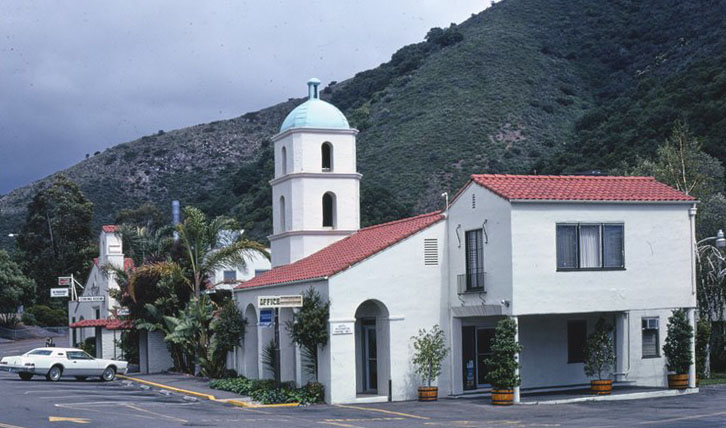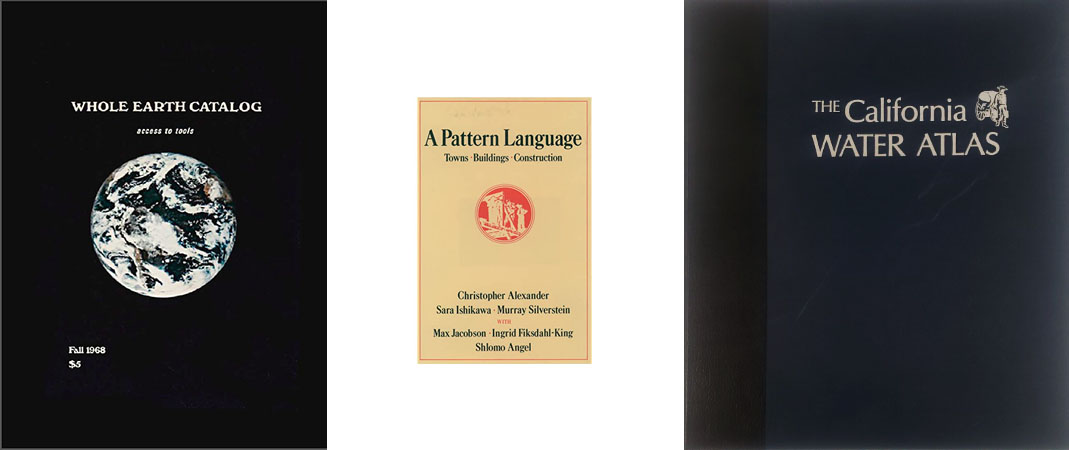In the inaugural issue of arcCA (Architecture California), the print predecessor to arcCA DIGEST, the Editorial Board presented a list of “Timeless Structures,” “buildings and constructions [that have] stood the test of time both physically and romantically.” That list comes with a disclaimer: “A list crafted by committee—as this one was by the Editorial Board during a meeting at, aptly, the Gamble House, and then through e-mail—is intrinsically subjective.”
So it is with this timeline, assembled by the editor with the help of the current Editorial Board, as well as a number of generous colleagues, who are acknowledged at the conclusion. The items noted here are in some cases firsts, in other near-firsts. In some cases, it is not the novelty but the intensity of the contribution that makes it noteworthy. Because the earlier “Timeless Structures” focused on individual buildings, this timeline tends not to.
In any case, it is certainly an incomplete account of California’s distinctive contributions to the built environment. Our hope is that, while most readers will say, “Oh, yes, of course,” to many of the entries, they may also find some surprises.
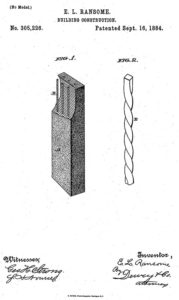
1884—Ernest L. Ransome patents twisted reinforcing bars for concrete; in 1886 he designs the first reinforced concrete bridges in North America for Golden Gate Park.
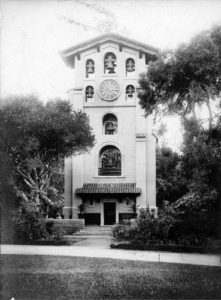
1909—The first bungalow court, St. Francis Court, is built in Pasadena.
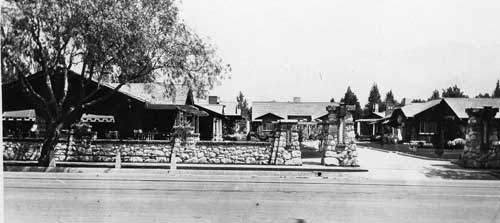
1912-16—The Essanay Film Manufacturing Co. films hundreds of movies (including five featuring Charlie Chaplin) in Niles, now an historic district of Fremont—the silent-era predecessor to Hollywood.
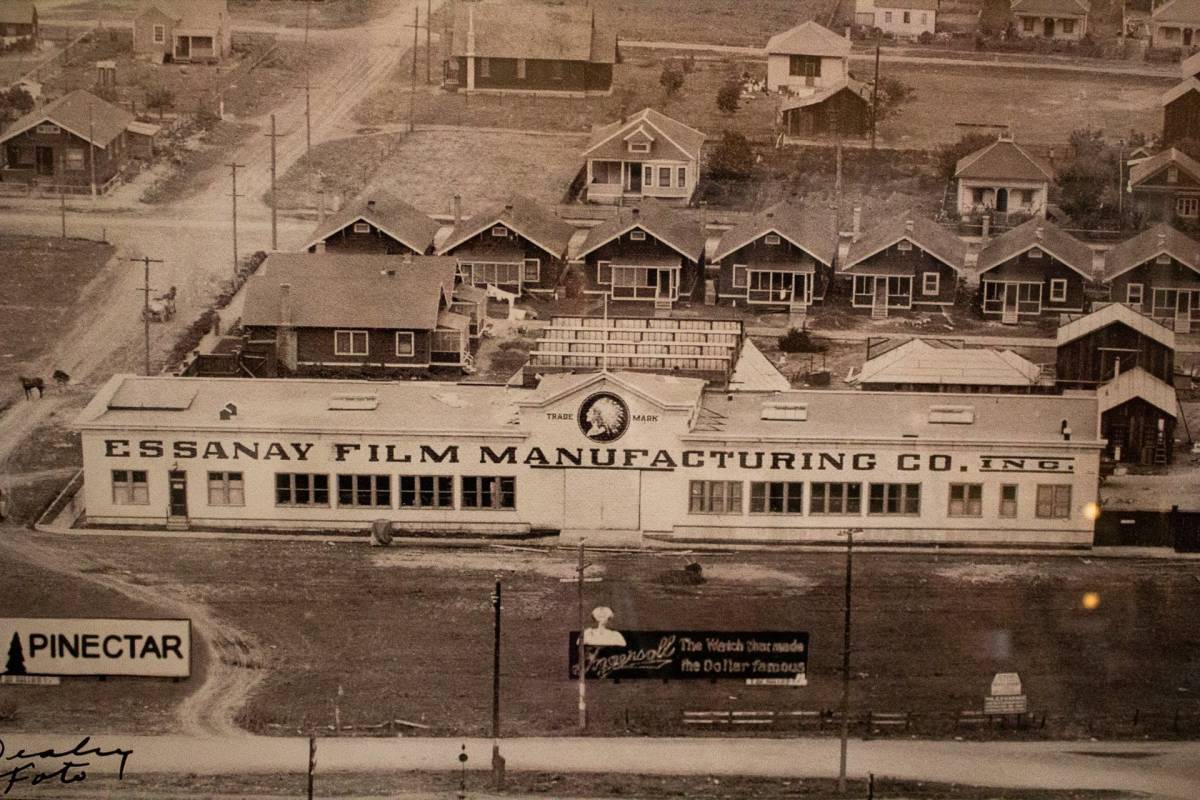
1917—Willis Polk designs a curtain wall façade for the Hallidie Building in San Francisco, the second in the U.S., after that of the 1909 Boley Building in Kansas City.
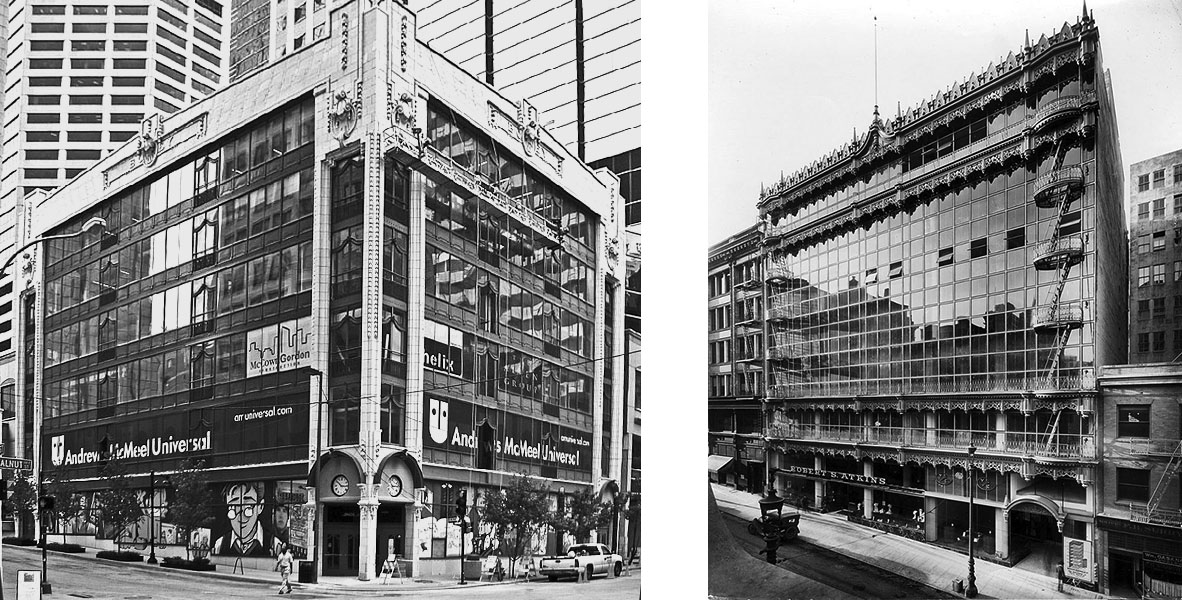
1924—Ye Market Place, the first drive-in market and precursor to the strip mall, opens in Glendale.

1925—Motel Inn (originally Milestone Mo-Tel), world’s first motel or motor inn, opens in San Luis Obispo.
1928—George Posey Tube, the nation’s second underwater tunnel (after the Holland Tunnel, NY/NJ) and first reinforced concrete tunnel, connects Oakland and Alameda.
1933—Hangar One, Moffett Field, near Mountain View, one of the world’s largest freestanding structures, covers 8 acres.

1934—The East Bay Regional Park District is founded; it is currently the nation’s largest regional park district, with over 125,000 acres in Alameda and Contra Costa Counties.
1931-37—Cliff May develops the California Ranch House in San Diego County.

1934—Rudolf Schindler’s Bennati House in Lake Arrowhead is the first modern A-frame design.
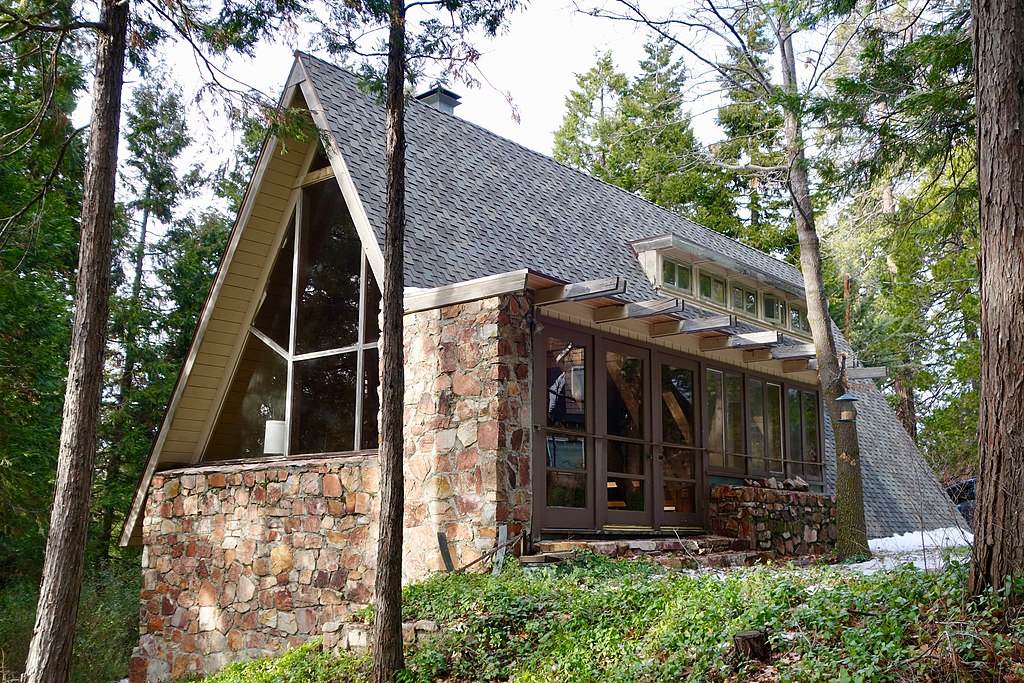
1933-37—Engineers Joseph Strauss, Charles Ellis, and Leon Solomon Moisseiff, with architects Edward and Gertrude Comfort Morrow, design the Golden Gate Bridge, the world’s longest suspension bridge until New York’s Verrazzano-Narrows Bridge opens in 1964.
1940-55—Franklin & Kump’s Acalanes High School, in Lafayette, introduces the finger plan, classroom blocks flanked by canopied corridors on one side and large metal sash windows on the other.
1942—Aliso Village, Los Angeles, designed by the Housing Group Architects, led by Ralph Flewelling and Lloyd Wright, is the nation’s first integrated public housing.
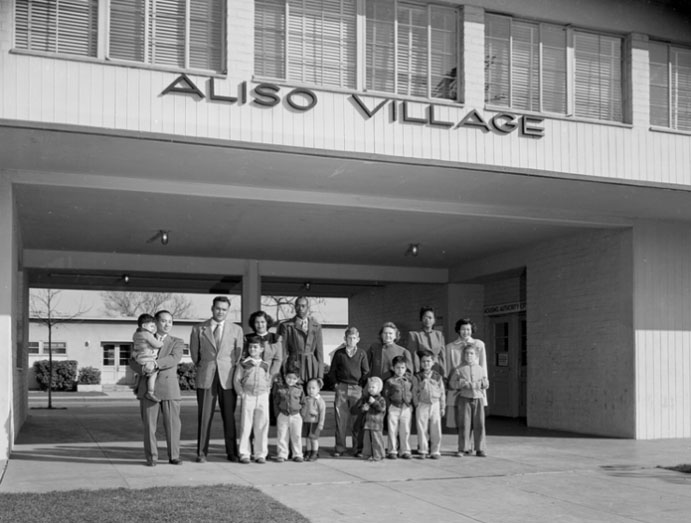
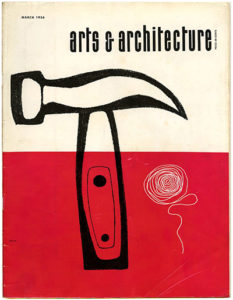
1949-66—More than 11,000 Eichler Homes are built in Northern and Southern California.

1950—Children’s Fairyland, one of the nation’s first themed amusement parks, opens in Oakland
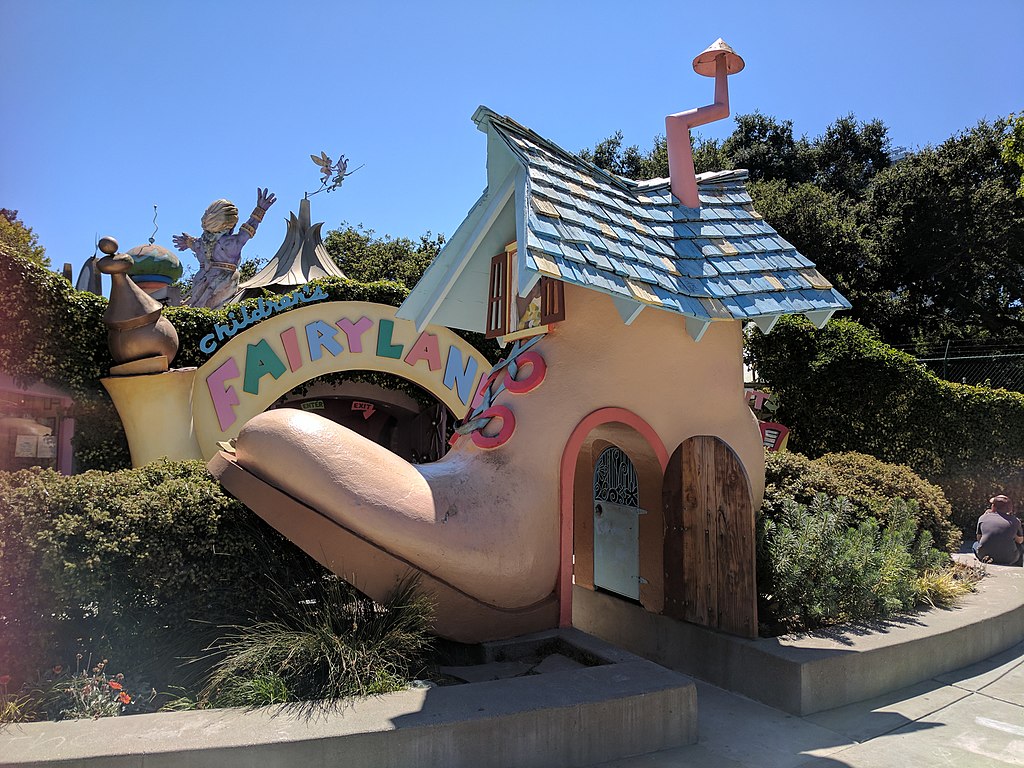
1951—Stanford Research Park, the first industrial park, is co-founded by Stanford University and the City of Palo Alto.

1955—Disneyland opens in Anaheim.
1956—Sunnyhills UAW Cooperative Housing, Milpitas, is the nation’s first planned integrated community.
1959—Pacific Coast Engineering Company builds world’s first landside crane for container ships (for the Matson Navigation Company), at Encinal Terminal, Alameda.
1965—Mario Ciampi designs overpasses for I-280 freeway. Alan Temko later writes, “Designed in 1965, after public protest compelled state highway engineers to seek outside help for aesthetics, Ciampi’s streamlined concrete structures … transformed a crude preliminary scheme into one of the most gracious freeways in the world.”

1967—The first bike lane in the U.S. is created in Davis, California.
1968—The Whole Earth Catalog is published.
1977—Christopher Alexander, et al., publish A Pattern Language.
1979—The California Water Atlas is published.
1980—The first Monterey Design Conference is held at the Monterey Conference Center; it will move to Asilomar in 1985.
1986—The Burning Man Festival originates on Baker Beach in San Francisco, moving to the Black Rock Desert in 1990.
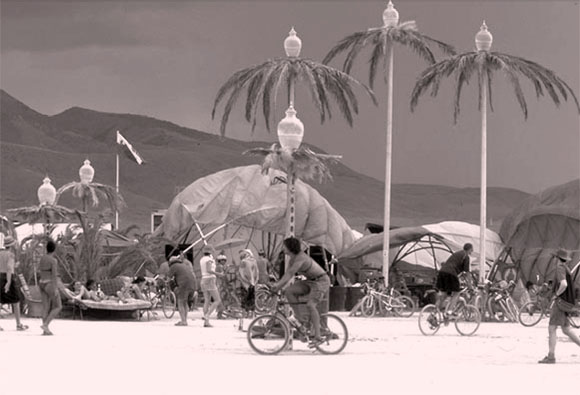
1996—Digitization begins for the David Rumsey Map Collection.
2005—Rebar’s Park(ing) Day installation in San Francisco is the world’s first Parklet.
2006—AIA California publishes Integrated Project Delivery: A Working Definition, the seminal work in the promotion of this highly collaborative model; in 2008, AIA CA partners with AIA National to publish IPD: A Guide.
2011—The Missing 32%/EquityXDesign is established by AIA San Francisco.
2014—Julia Morgan becomes the first woman to receive the AIA Gold Medal.
2022—California Legislature passes significant climate laws.
With thanks to Paul Adamson, FAIA, Mark Anderson, FAIA, Margaret Crawford, Diane Ghirardo, William Littman, Mitchell Schwarzer, Nicki Dennis Stephens, Hon. AIA, and Therese Tierney; and to the members of the arcCA DIGEST editorial board: Lucy Campbell, Leigh Christy, FAIA, Anne Cotter, AIA, Andres Diaz, AIA, Mark Miller, FAIA, and Simon Sadler.

